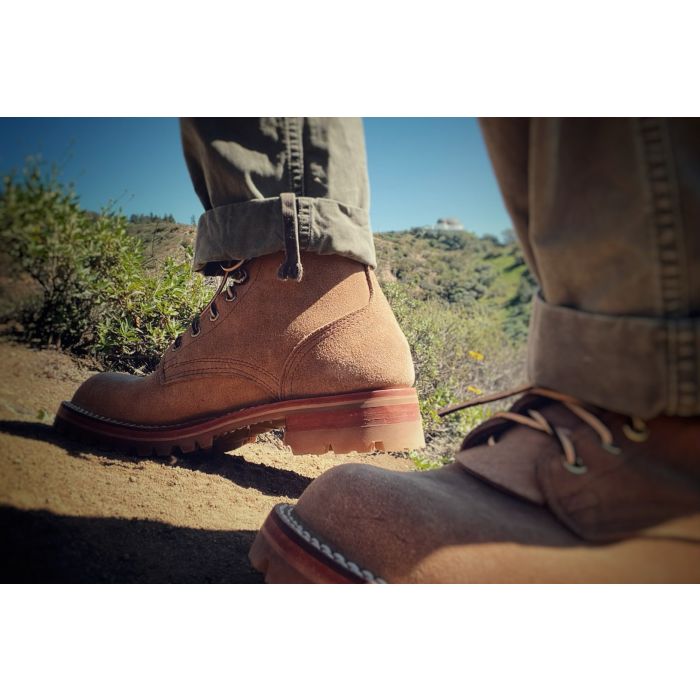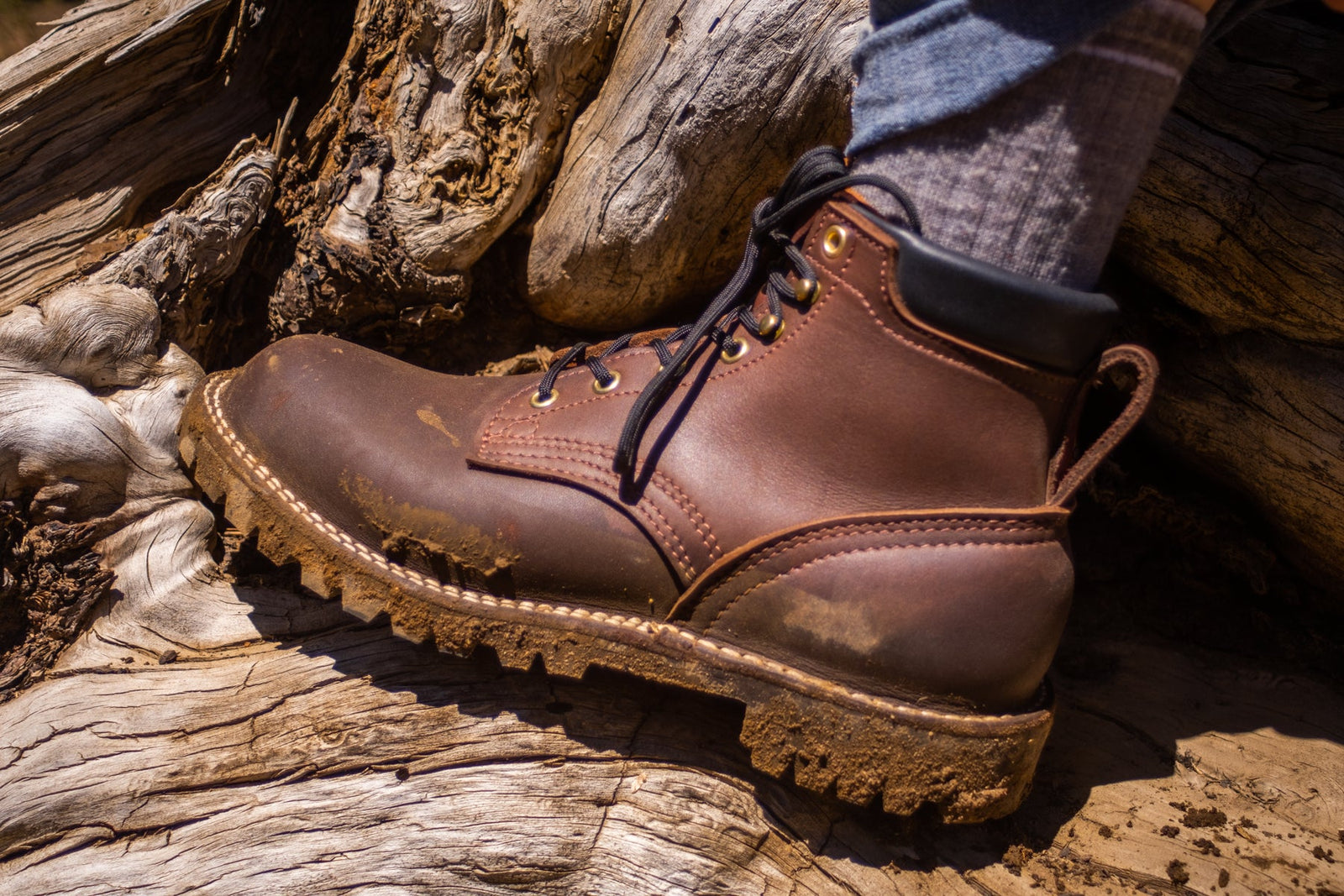A lot of people wonder if there is a particular type of work boots to keep feet cool. While hot weather footwear is a thing (we'll talk about that) the answer is really to get better socks.
That sounds kind of convoluted, doesn't it? Don't worry; we're going to go over that a bit more.
The truth is your feet are going to get warm if you're wearing work boots in warm weather. They're going to also be warm if you're wearing work boots in cold weather and doing actual labor.
So why are socks the key to keeping your feet from getting too hot?
Leather Work Boots Actually Breathe
For the most part, leather work boots actually breathe, believe it or not. Not as much as mesh material, to be sure, but they actually do.
Consider for a moment what leather is. It's skin! Skin has pores, little channels and holes going through it that allow heat and moisture to evaporate off the surface. That doesn't change just because the skin has undergone the tanning process.
The spaces between the molecules of the skin have gotten a little smaller because of the chemicals that are absorbed by the leather, but it's still a breathable material; most leather is not water- nor air-tight.
Russian leather, an old leather product no longer in production, approached true waterproofing but that's as close as leather gets. Heavily polished or waxed leather is also a lot less breathable as there's a layer of waxy material on the surface.
However, your typical work boot is not polished. You don't polish work boots; you grease them and oil them. Since the typical pair of leather work boots isn't impregnated with wax polish or what have you, moisture and heat can actually escape.
So what about all the hot weather boots that are out there? You know, kind of like the ones that armies use? And what about hiking boots with mesh uppers?
Well...about those…

Hot Weather Boots Aren't Always What They're Cracked Up To Be
The problem with a lot of military-style boots for warm weather and hiking boots is that you either won't get the performance you need (not as comfortable or durable) than you'd get from a quality work boot.
A lot of them also aren't as "cooling" as you'd think, and heat transfer is not really what they're designed to do.
That sounds like a lot doesn't it?
Most "military style boots" of modern design use cemented construction, meaning the sole is glued to the upper. Sometimes well (the ones that are issued and/or approved for use are usually put together alright) and sometimes not...but none are welted or stitched, so you won't get the service life from a pair that you will from quality stitched boots.
People who lived in those boots overseas often had to keep "ShoeGoo" on hand to keep them glued together in the field...and went through a few pairs during a deployment.
The same is true for modern hiking boots. Even the expensive brands use cemented construction on the sole, and mesh uppers tear easily in the field.
Also, consider that Cordura or a different kind of woven nylon is not really all that much more breathable than leather. Even if it is "more breathable than leather," they have to make them so thick for structure that it defeats the purpose.
Granted, there are some very high-quality examples of both that can work...but they aren't going to be any cheaper than a pair of quality work boots. They likely won't be much "cooler" for your feet (if at all) and won't last as long.
And what about those old-school jungle boots? Those should be a bit more comfortable in hot weather, right?
Not as much as you'd think. Jungle boots weren't really made with temperature regulation as a design feature. What they're actually designed to do is drain easily, to let water out.
Hot feet...don't really matter. Wet feet can develop into trench foot. Soldiers literally died from trench foot in some conflicts; the wet flesh of the feet started to rot, which developed into gangrene and sepsis.
Old-school hot weather combat boots that look like Chuck Taylors with an aggressive tread are really not much different than Chuck Taylors with an aggressive tread. Chuck Taylors make lousy footwear for hard days spent on your feet working.
So ultimately, what's the best way to keep your feet from overheating? Buy better socks.

The Best Thing To Go With Great Work Boots? Really Good Socks
Department store socks are awful. Poor quality materials, and poor performance. Invest in some high-quality socks and your feet will be happier for it.
What are the best to get? That would be merino wool, or a high-quality merino wool blend.
Wool wicks moisture away, but also allows for evaporation to happen; the moisture it absorbs is slowly vented off as water vapor, which keeps your feet dry as the day goes on. Wool is an excellent insulator for this reason, but the thing to remember is that you only reach for thick socks in the cold months.
High-quality cotton socks - again, you won't find them in most department stores - are also a good option. Cotton absorbs moisture and allows heat to escape, but you'll have to do some homework to find good quality ones. You'll be washing them a lot, though, which (as with all cotton clothing) will shorten their life. So really...wool is better.
Wear lighter socks of good quality and you won't have any overheating problems during hot weather. Your feet will stay dry and won't get too toasty.





































